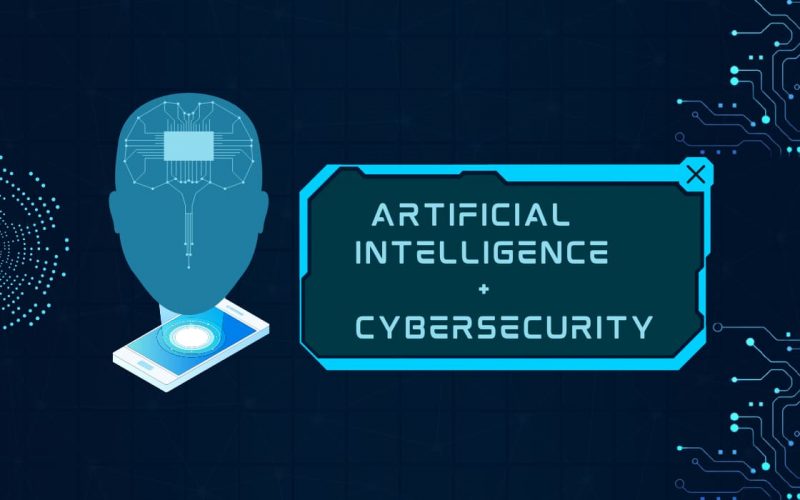Discover how AI enhances cybersecurity, with a focus on SAP security. Learn about AI’s impact on threat detection, user analytics, access control, and more.
As we navigate this digital era, cybersecurity has never been more crucial to business operations. As cyber threats evolve and businesses seek ways to bolster their security infrastructure, Artificial Intelligence (AI) has emerged as a revolutionary innovation transforming cybersecurity strategies, specifically SAP security. This article delves deeper into its impactful use in SAP security environments.
Unsung partners
Artificial Intelligence offers businesses a promising solution to the ever-evolving challenges in cybersecurity. Through AI’s ability to learn and adapt, businesses can automate and enhance their security measures, making them more efficient and effective. This makes AI an invaluable asset in cybersecurity, ranging from threat detection and anomaly detection to intelligent access control systems and predictive security analytics.
AI in SAP security
SAP, the industry-leading enterprise software provider, is no stranger to cyber threats posed by cybercriminals. To combat them effectively, SAP security has turned to AI technologies to combat them effectively as part of its defence against these risks. Here’s how AI technologies strengthen SAP security:
Threat detection and anomaly detection
AI is indispensable in identifying real-time security threats. It analyses system logs, user behaviour data, and network traffic patterns to detect abnormal activities. Furthermore, machine learning algorithms learn from historical data by recognising patterns indicating suspicious activities; this enables security teams to respond swiftly and minimise damage.
User behaviour analysis
AI techniques are utilised in SAP systems to study user behaviour. By setting baseline patterns, any deviations from these can be flagged as potential security risks, such as unauthorised access attempts or unusual data access activities. By continuously monitoring and analysing user actions, AI assists in detecting insider threats or compromised accounts.
Intelligent access control system
AI can assist in automating access control processes. By analysing user roles, permissions, and historical access patterns, machine learning algorithms recommend or enforce appropriate access rights based on job roles, responsibilities, and user behaviour, thus reducing risks related to excessive privileges or unauthorised access.
Predictive security analytics
AI’s capacity for processing large amounts of security data – from threat intelligence, vulnerability assessments, and historical attack patterns – is transformative. Security teams can utilise AI models to proactively detect vulnerabilities or emerging threats in advance to implement necessary preventative measures in time and thus predict and avoid security incidents altogether.
Incident response and remediation services
AI-powered security systems facilitate incident response by automatically correlating and prioritising security events. They generate alerts and suggest remediation actions, helping security teams investigate incidents more quickly while decreasing response times and the impact of breaches.

A proactive approach
Reactive approaches to cybersecurity no longer suffice in today’s digital landscape; AI’s predictive and preventive capabilities offer businesses a proactive solution for mitigating security breaches. By analysing historical attack patterns and threat intelligence, AI can identify vulnerabilities or emerging threats early, allowing businesses to take the necessary precautions before a breach occurs and effectively minimise risks.
AI and the human element in Cybersecurity
Although AI offers great promise when it comes to cybersecurity, it’s essential not to lose sight of its place within human security teams. AI tools should serve to augment and not replace them; using their insights, AI can assist professionals in making informed decisions and responding more quickly when threats emerge. However, empathy and ethical considerations often dictate that human touch must remain part of any solution.
Implementation challenges
AI offers numerous advantages to cybersecurity professionals; however, its implementation isn’t without challenges. One key challenge lies in gathering relevant and high-quality data as AI systems learn from data input; thus, output quality directly correlates to input quality, ensuring accurate, relevant, and unbiased input data is necessary for successful functioning AI systems.
Another challenge lies in over-relying on AI. While AI can automate and enhance many aspects of cybersecurity, there’s always the risk of false positives or negatives; too much reliance on it could lead to complacency, leaving systems vulnerable.
An ever-changing relationship
As cyber threats develop and evolve, so must our defences. AI systems, with their ability to learn and adapt, AI systems are perfectly equipped for this task, providing businesses with up-to-date and effective security measures.
How AI Plays an important role in cybersecurity training
AI can play an essential role in cybersecurity training. By simulating cyber attacks, AI provides security teams with hands-on experience dealing with various threats, which is crucial for improving response times to real security incidents.
Regulations
As AI becomes more ubiquitous in cybersecurity, we’ll likely see more regulations surrounding its use. Businesses should ensure their use of AI complies with all laws and regulations related to data privacy and ethical considerations associated with AI use.
Partner for tomorrow
AI and cybersecurity will shape the future of digital security. As more businesses digitise operations, the need for robust cybersecurity measures only grows. AI’s ability to learn, adapt, and predict is perfectly equipped to fulfil this need.

AI and the Internet of Things (IoT)
The IoT (Internet of Things) presents unique challenges to cybersecurity. With so many connected devices and the large potential attack surface for cybercriminals, AI plays an invaluable role in protecting IoT devices by continuously analysing data from them and detecting anomalies or threats to ensure overall ecosystem protection.
AI and Blockchain in Cybersecurity
An exciting innovation in cybersecurity is the combination of AI and blockchain technology. Blockchain’s decentralised nature provides inherent protection, while AI can enhance this defence against threats in real-time by detecting them immediately and responding accordingly. When combined, these two can form a robust infrastructure for digital transactions.
How AI Contributes to cybersecurity research
AI can serve as a useful tool in implementing cybersecurity measures and an invaluable asset in cybersecurity research. By analysing large amounts of data, AI helps researchers spot trends and patterns related to cyber threats, potentially leading to more effective security measures and strategies being developed.
Conclusion: harnessing AI for Cybersecurity
AI in cybersecurity is more than a trend; it’s an evolution. AI is changing how businesses protect digital assets in an ever-more dangerous digital landscape. By adopting this revolution, businesses can stay ahead of cybercriminals while maintaining safe operations in this digital era.
However, AI-powered cybersecurity comes with challenges, from ensuring data quality to navigating regulatory landscapes. Businesses must be ready to face these hurdles head-on; with strategic thinking and balanced approaches, these obstacles can become opportunities. AI in cybersecurity should not simply be implemented in a basic sense; its full potential must also be realised and utilised to create a resilient and adaptive infrastructure.









